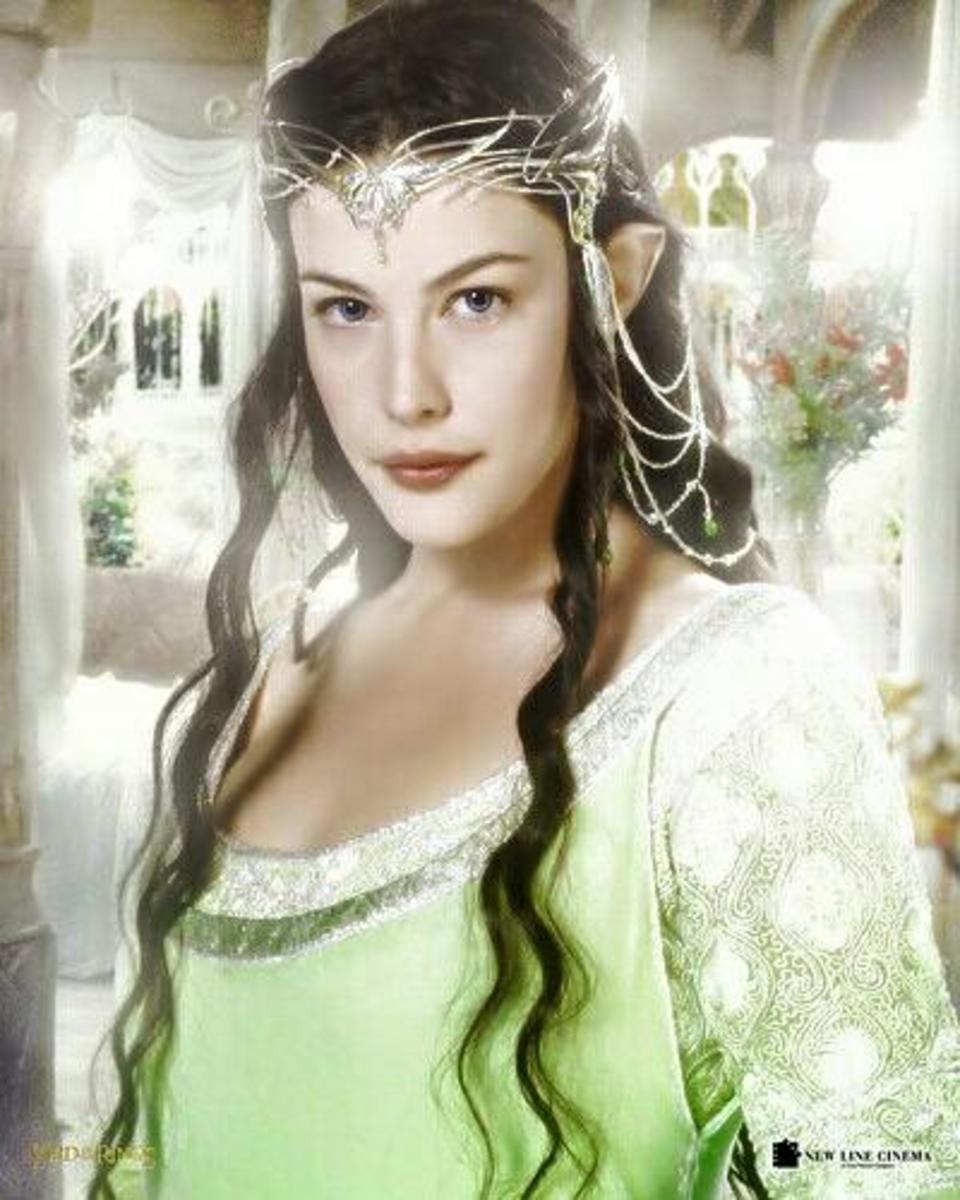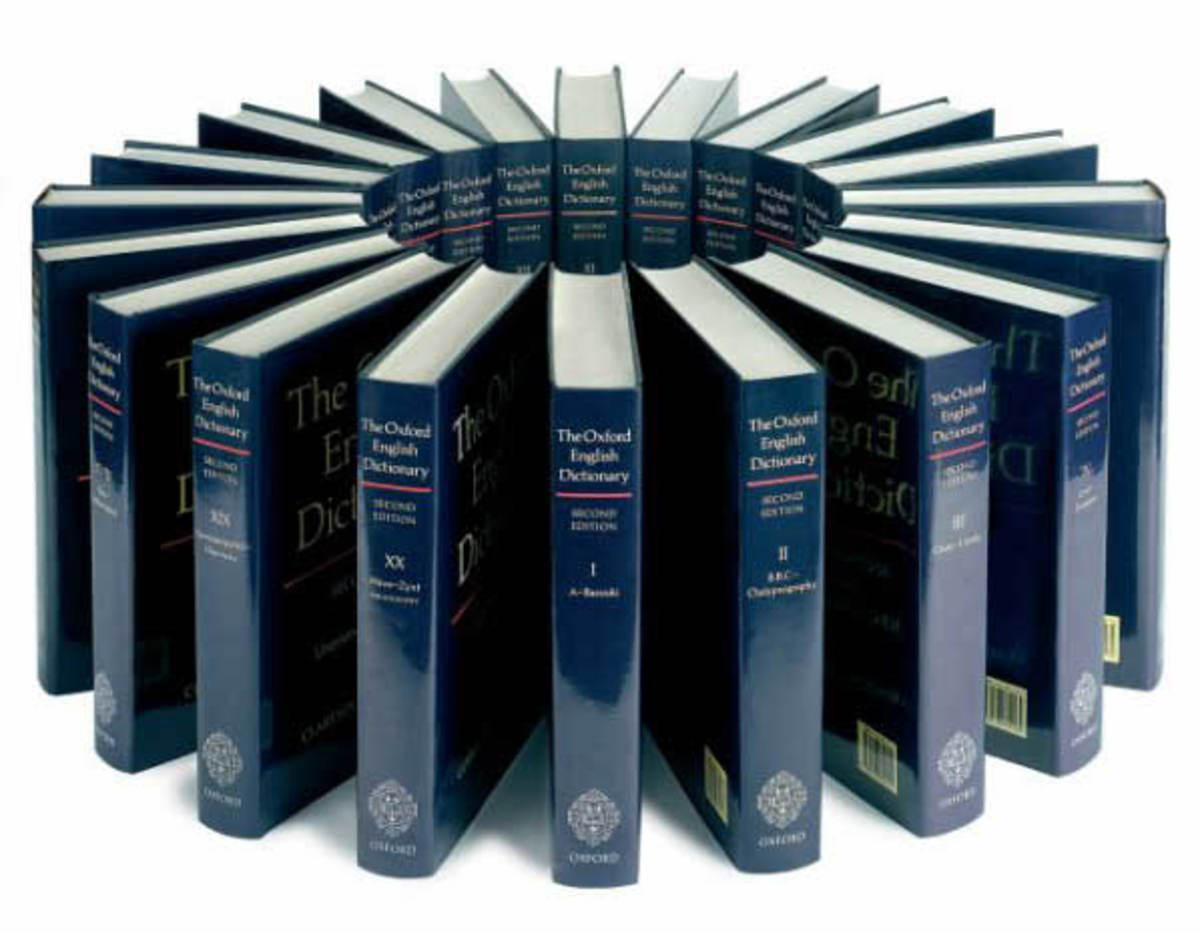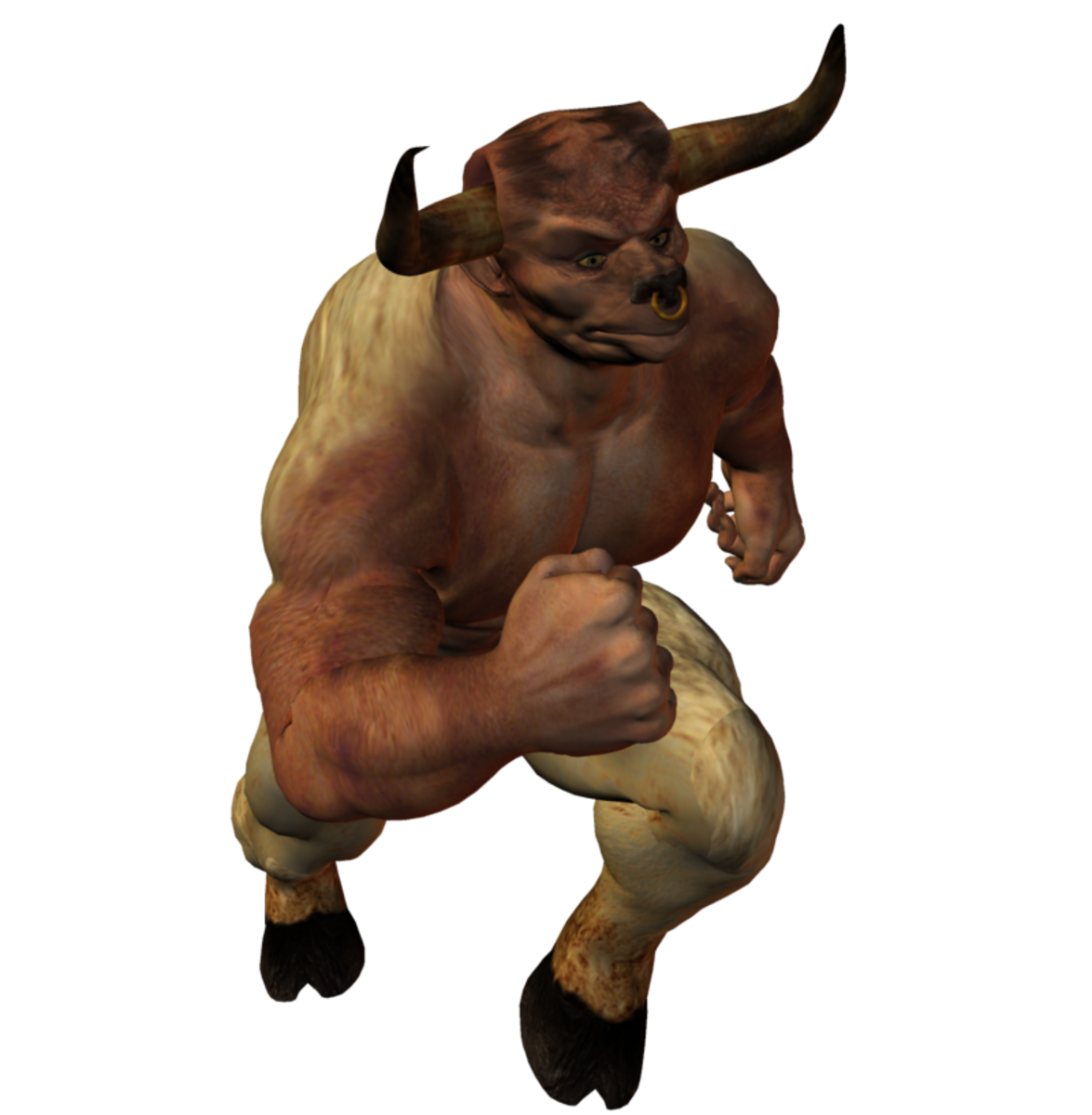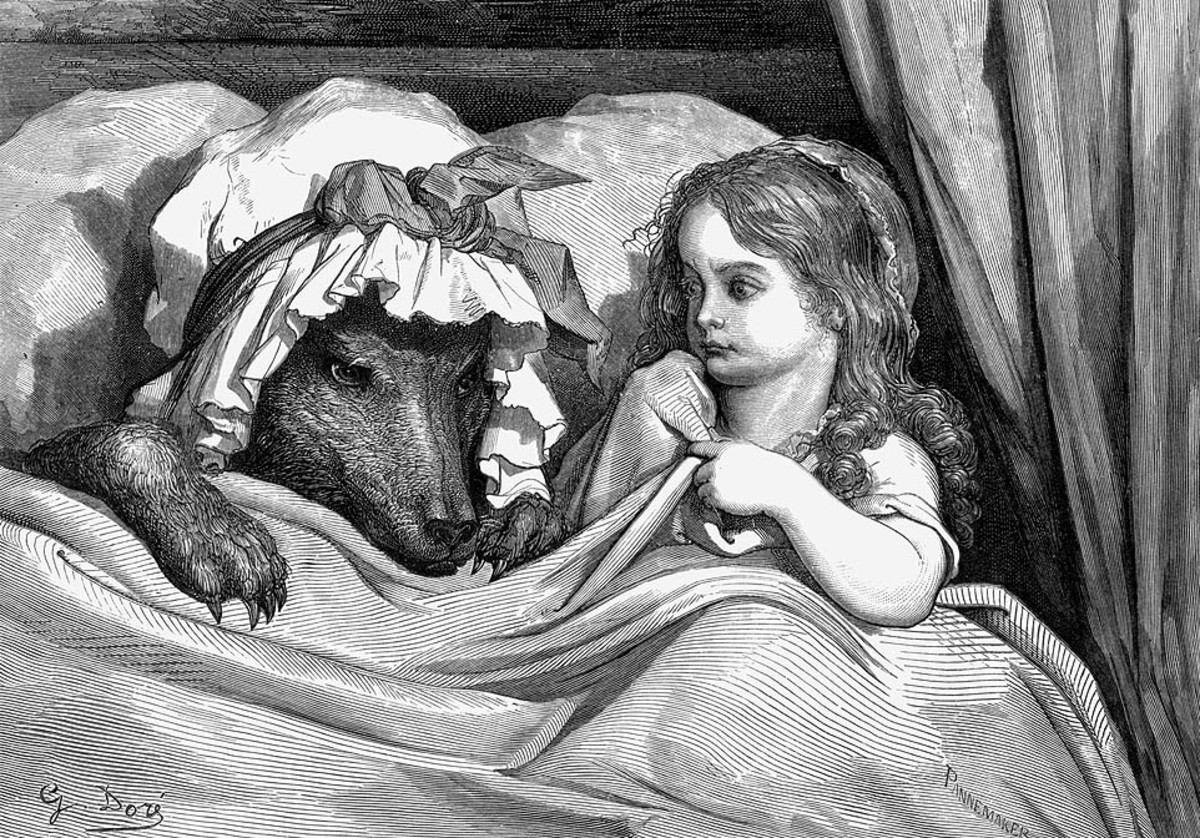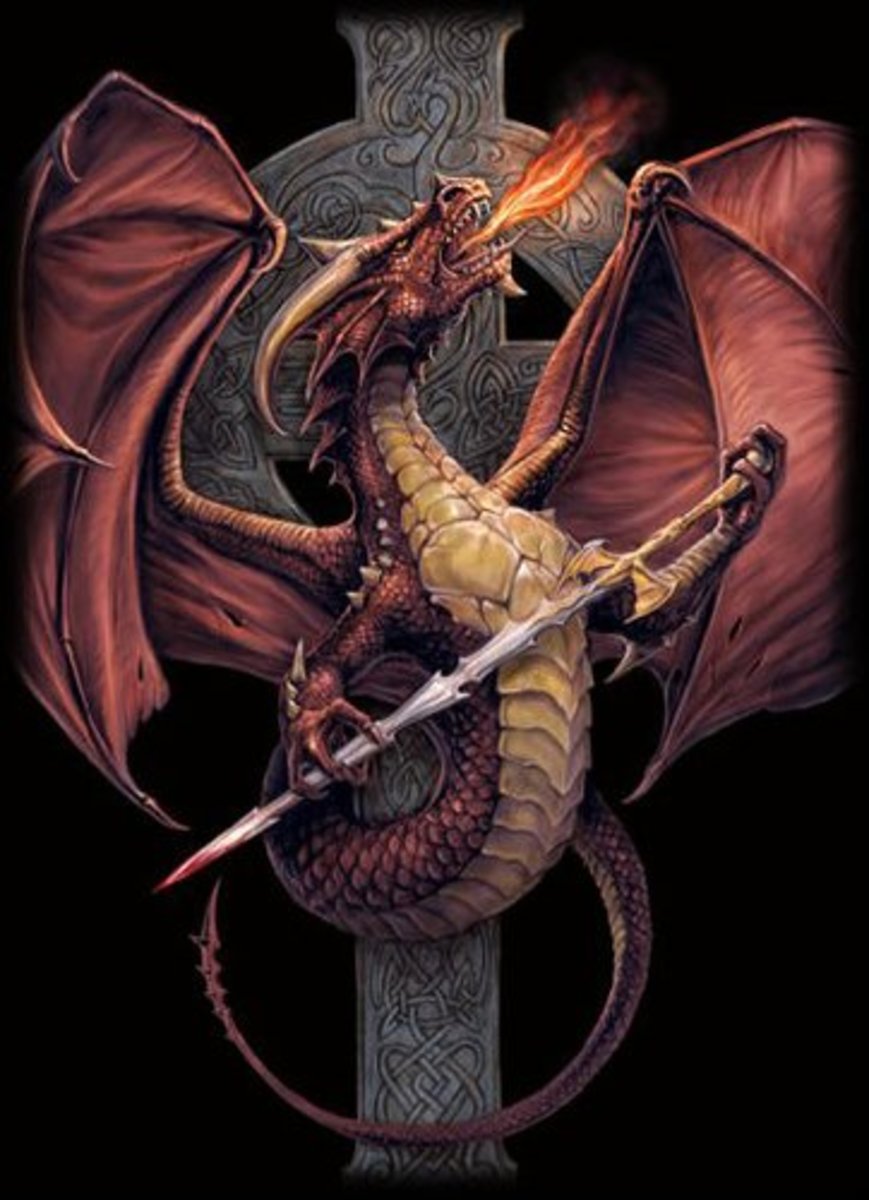Minotauros the Minotaur: Modernization and Immortality
This is a continuation of the discussion about various aspects of Minotauros the Minotaur. His main claim to fame is being one of many of Theseus’ opponents. Previous coverage of Minotauros includes a background and overview and iconography.
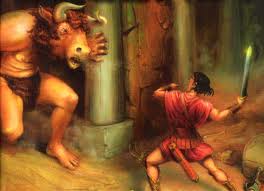
The End of Minotauros?
Minotauros’ death does not mean that his life is completely over. Minotauros has become the subject of many different genres. The myth and depiction of Minotauros has kept his name and representation into the modern world through books, games, art, and various other art forms. For example, various interpretations of Minotauros’ death has persisted throughout time. Modern artists have reworked the scene in which Theseus slays Minotauros in modern colors and figures. Although usually presented in grey scale, Theseus’ cape is often depicted as red, his helmet and shirt are gold and yellow and his undergarments are blue. This modern rendition makes Theseus and Minotauros appear less like figures from the ancient world of muscular heroes and monstrous foes. The Egyptian profile look is gone and a more three-dimensional picture is created. Minotauros is not left defenseless in this painting. He has a long club to combat Theseus’ sword and shield. However, there is a combination of different interpretations here. Theseus is sometimes said to have beaten Minotauros with a club he was carrying (Lexicon 575). But, Theseus is never depicted as carrying a shield and Minotauros is rarely seen holding a club.
Minotauros in the Modern World
What if Minotauros actually survived his bout with Theseus and lived in the modern world? Author Steven Sherrill Canongate decided to tackle this scenario in a book titled The Minotaur Takes a Cigarette Break. In a book review by Sam Leith titled “From labyrinth to Trailer Park”, Canongate’s book is given life, or rather Minotauros is brought to the modern world. Basically, Minotauros lives in a trailer park located in North Carolina and works as a chef at a rib shack (Leith 1). Minotauros now goes by simply “M” and faces problems and dilemmas like any other human with exceptionalities. For example, “Teenagers shout ‘Moo!’ at his back” and “others react with compassion or indifference” (Leith 1). Canongate is clear that M is the Minotauros from Knossos and has the horns, fur, and long snout (which hinders his vision) to prove it (Leith 1). The point is M is a person like anyone else trying to survive in a less than idealistic world. He has to use talc to combat his hot fur, balms to soothe the sore that marks the dividing line between his two halves, and even uses special paper to polish his horns (Leith 1). M has hopes like normal people but finds his animal nature gets in the way. Like an adolescent, M feels weird around women, reserved around men, wants to be in the in-crowd, and does not think love is possible for him (Leith 1). Some problems M has are that his horns bump into objects and at times people and his thick tongue and bovine mouth make speaking hard (Leith 1). Because of these hindrances, M’s dream of being able to sing will never come true since he is reduced to grunts and lows to communicate (Leith 1). Canongate’s shocking portrayal of Minotauros living in current society reinforces that Minotauros was the unfortunate result of something he had no control over. If given the chance by his step-father back in the B.C. times, Minotauros could have proved that he could be a part of Cretan society.
Minotauros and Gaming
Minotauros has also found his way into the world of games. The labyrinth in which Minotauros was housed is more of a puzzle now as it was when Daidalos first built it. The Minotauros cube puzzle includes several blocks of wood that can be formed to make several different puzzles. However, Minotauros—as human as he may be—may steer clear of this game for a long time.
Minotauros has also reached the realm of video games. A video game called Seven Kingdoms II features creatures called Minotaurs that resemble the life and character of Minotauros. According to the website, “The Minotauros are a hybrid form of vegetal and animal life resembling the fabled minotaurs of legend (Chan 1). They have a strong affinity for minerals and have developed the esoteric practice of Alchemy” (Chan 1). These creatures even have a lair named Minotauros lair, spelled exactly like our mythological Minotauros. There is no doubt that the creators of this game got inspiration from the mythological figure of Minotauros.
There is yet another game that uses Minotauros as a main character that is based on Xena. The video game has recreated a modern version of what occurred on the island of Crete. The top of Minotauros’ head is visible, recognizable from the horns and fur. To make Minotauros seem more threatening, the artists have taken the liberty of portraying Minotauros with more animalistic qualities—like claws for hands. The main objects, or rather subjects, of this clip from the game are three victims chained to the wall. Of course this is a modern interpretation, but it may be suggesting that Minotauros saved his human sacrifices for future meals. This would be appropriate if Minotauros was only sent food once a year (or nine years according to some texts). By Minotauros becoming part of the internet and world of video games, his character and name are solidified in the real world.
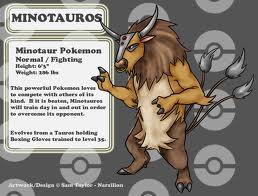
There are three more recent applications of Minotauros to games. Minotauros now even lends his name to a hockey team and rugby team. And with the popularity of Pokémon, apparently a classic figure like Minotauros was too much to pass up. So, there are a couple of adaptations of Minotauros for Pokémon (see right).
The use of Minotauros goes beyond games into the realm of anime. Two of the most notable appearances of the name are in two specific animes. The first is one of my all time favorites, Naruto. The second is the series One Piece. Clearly this list is not exhaustive, but it gives a good starting point for how pervasive Minotauros continues to be.
Minotauros: Immortaility
Thanks to interest in Minotauros, he can be remembered like a hero. Although Minotauros does not get a whole epic poem, he does get a traditional poem. Richard Foerster, a celebrated poet, wrote a poem titled “Minotaur” in memory of Minotauros. The opening lines prove that Foerster is describing no other than Minotauros and his labyrinth: “A maze, into which / eyes, peering, / must adjust: a door / latched, and another, / then one left open for / the as-yet timid… each trailing his thread of yesterdays, to travel / a way out into light, to whatever he thought was…” (Foerster 1). The “as-yet timid” are obviously the fourteen youths to be sacrificed to Minotauros. There is even a hint about the ball of thread to help the youths get out of the labyrinth into light again. While Foerster, like other artists, has taken liberty to change some facts around slightly, the poem recognizably reflects the end of the myth of Minotauros and Theseus.
If poems and pictures are not enough for people to remember Minotauros by then they can buy a Greek souvenir. At GreekShops.com, pieces of Greek folk art can be purchased. The main product the company sells that includes Minotauros is a plaque made of silver and wood. Each souvenir is made in Greece so it is authentic. The product description claims that “eachproduct is crafted with particular emphasis on detail. The silver used is specially processed so that it never loses its shine” (“Minotauros” GreekShops 1). There is only one problem with the company’s statement. Minotauros in a relief is portrayed as a complete bull; there is nothing human about him. The figures surrounding Minotauros do not resemble what is said to happen in the myth. At least the silver reflects the everlasting staying power of the myth. Minotauros has been immortalized in two other major ways. Minotauros has graced the cover of mythology books showing that he too is important in mythology—even if Theseus tends to overshadow Minotauros’ story. The more Minotauros is given recognition the more he is glamorized. Minotauros’ bovine characteristics make him ideal as a symbol for power and strength. Therefore, Minotauros has been made into an icon. Like GI Joe, Minotauros has been made into an action figure. People can now buy a small figurine of Minotauros for their own viewing pleasure. Minotauros is second from the left.
In Sum
Like Greek heroes, Minotauros too has become immortalized. Minotauros’ almost infamous reputation has brought him into the modern world in a plethora of ways. So, is Minotauros a friend or a foe? According to the myth, Minotauros should be considered an enemy because he devoured human beings. But, Minotauros really had no choice. He was a bastard child that was rejected by his step-father and the by product of a selfish man and a furious god. Canongate believes that Minotauros is more of a friend. Minotauros is capable of having emotions and desires to be like everyone else. Minotauros is a complex and multifaceted character. Therefore, no one interpretation can be absolutely correct. However, Minotauros’ popularity throughout time has given him a chance to clear his name and allow his story to be told without reservation.
Bibliography
Chan, Trevor. “Seven Kingdoms II.” Web. 2 April 2004. <http://sevenkingdoms.ubi.com>.
Foerster, Richard. “Minotaur.” Prairie Schooner. Fall 2002. Infotrack Expanded Academic ASAP, Web. 5 Mar. 2004.
Leith, Sam. “From Labyrinth to Trailer Park.” Spectator, 24 May 2003. Web. 5 Mar. 2004. Infotrack Expanded Academic ASAP.
Lexicon Iconographicum Mythologiae Classicae. 8 vols. Switzerland: Artemis Verlag Zurichund Munchen, 1992. Print.
“Minotauros.” Web. 4 Mar. 2004. <GreekShops.com>.




